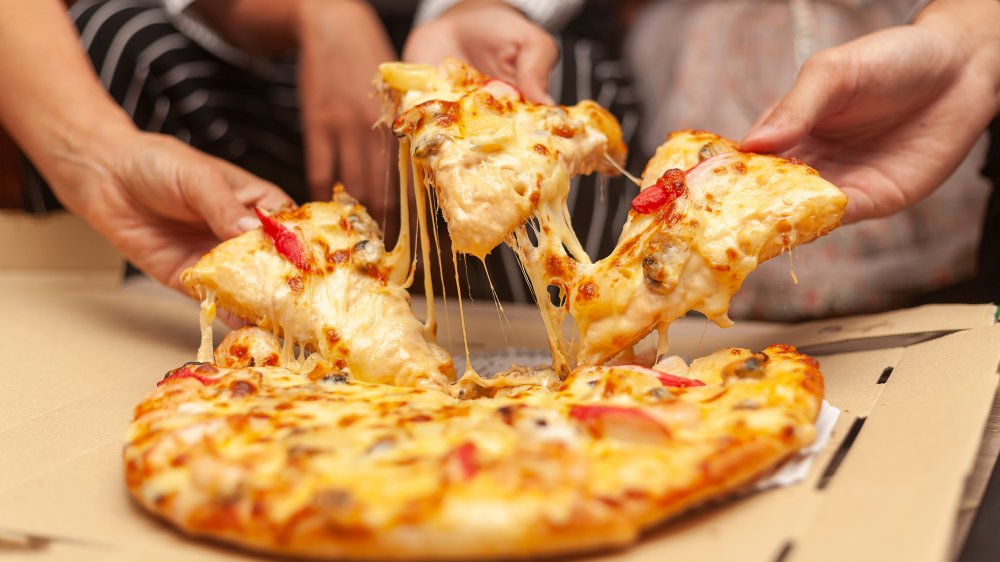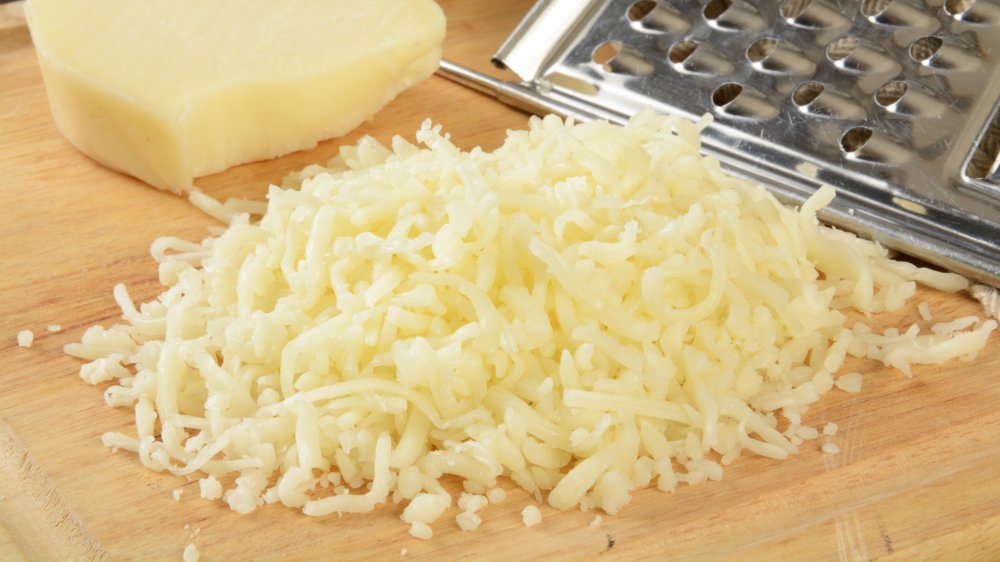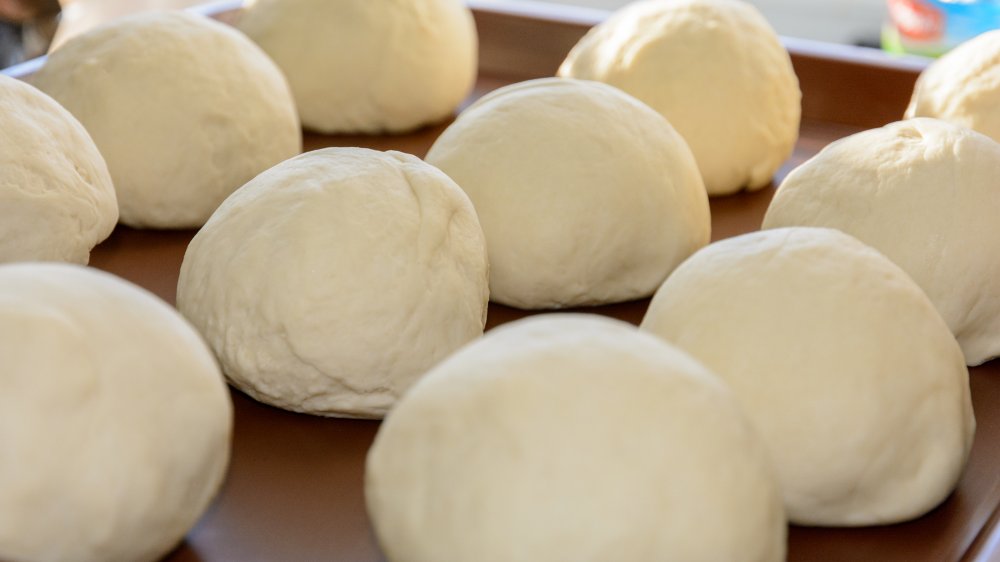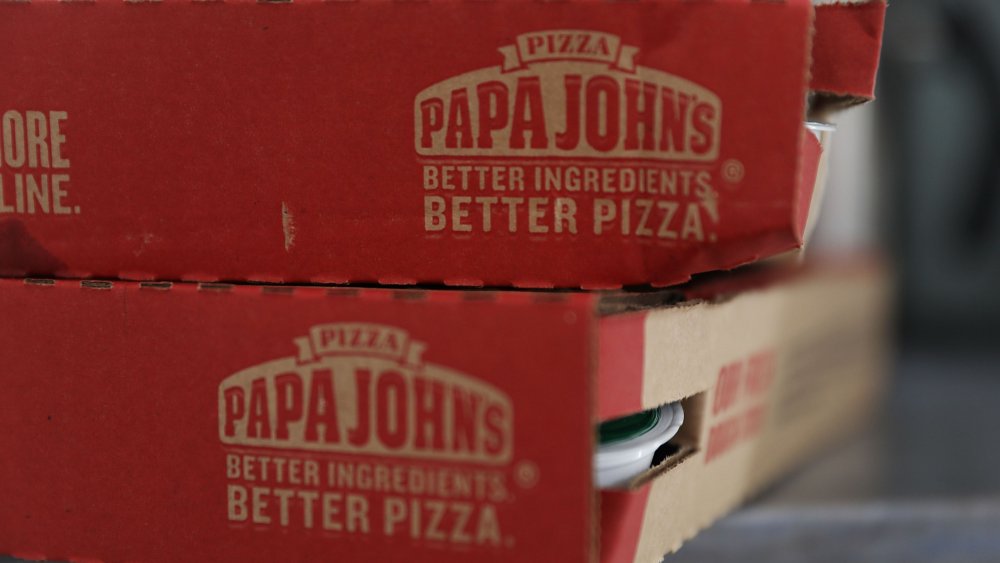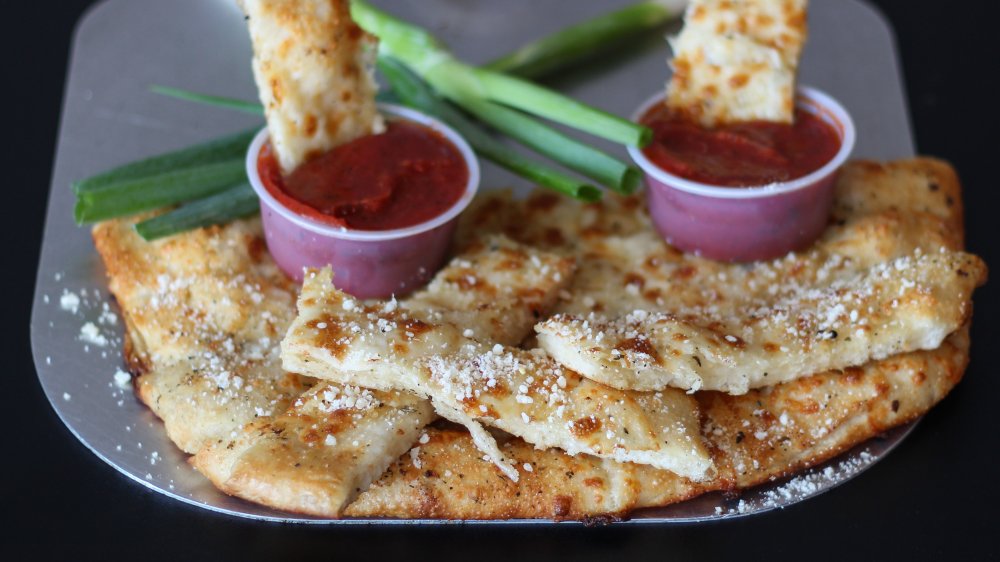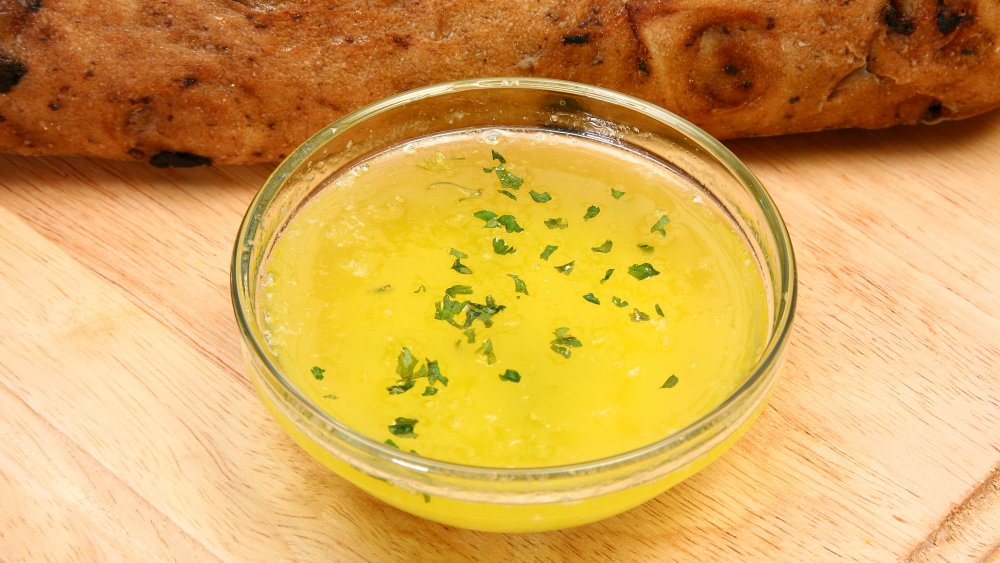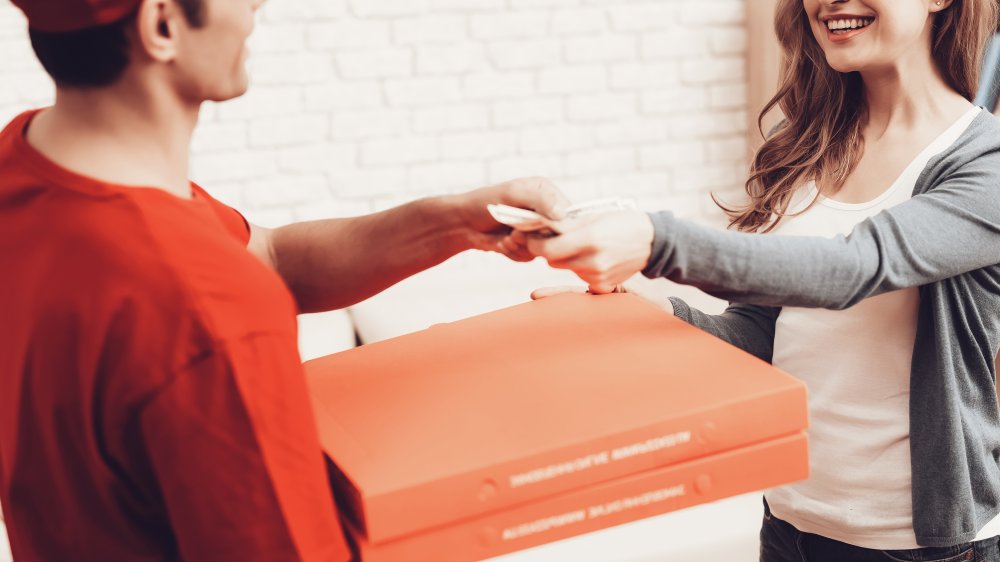Sneaky Ways Pizza Chains Scam You
Pizza Hut, the first pizza chain in America, opened up in 1958, and since then our insatiable national hunger for pizza has spawned many other chains. But even though they've become such a big part of our culinary landscape, it turns our these pizza chains can't always be trusted.
Whether you can't get enough of the classic Pizza Hut stuffed crust, want to chug Papa John's garlic sauce by the gallon, or go to bed at night dreaming of Little Caesars Crazy Bread, chances are at some point in your life you've ordered a fast food pizza pie or two.
But not all pizzas are made equally, and a closer look at pizza chains reveals that the way they make their pizza doesn't always hold up to scrutiny. While you may be envisioning freshly shredded mozzarella, a ladleful of sauce lovingly spread over a hand-tossed round of dough, and a pizza packed for delivery with care and attention, the reality is much starker. After all, these are chain restaurants we're talking about, not mom and pop pizza joints, no matter what story they try to sell to you.
These are just some of the ways pizza chains try to scam you.
That pizza cheese might be a scam
For many, the gooey, melted cheese is the best part of a pizza. Without cheese, what is pizza but a lowly flatbread? Sure, some classic Roman pies come sans-cheese, but if you're ordering a hot pie from a major chain in the U.S., that stretchy, milky mozzarella is what we've come to expect.
So finding out that sometimes that cheese isn't real cheese feels like nothing short of betrayal. But some chains use cheese products that aren't 100 percent authentic, probably because cheese is expensive — it accounts for almost 40 percent of the total cost of making a pizza. In the U.S., many major chains are using cheese with added preservatives — and maybe even sprayed on colors and flavors.
When officers from a trading standards department in the UK tested fast food pizzas for authenticity, they discovered that 19 out of 20 pizzas samples were made with something called "analogue cheese," an imitation cheese that's cheaper and easier to produce than the real thing.
A different test found that one in four pizzas was made with a non-dairy product made mostly of fat and oil that was made to look and taste like cheese, but wasn't the real deal.
Something to think about the next time you want to order a large extra-cheese pie.
The pizza dough isn't made fresh
There's almost no pizza shop image more iconic than that of the chef slapping and thudding a ball of dough on the counter before shaping it into a large circle and tossing it up in the air until it reaches the perfect width and thickness. But in today's pizza chains, most of the dough comes frozen, and isn't mixed in-house.
At Pizza Hut, for instance, one worker revealed that not only does the dough come frozen, but sometimes they actually pre-assemble the pizza with the ingredients too.
Basically, they're sent a frozen disc of dough which is put into pans where it's sprayed with oil then left to defrost and proof (rise). Once the dough is ready, the pizza is assembled — sauce, cheese, and toppings are added, and then the pre-assembled pies are kept in the refrigerator until they're ready to be cooked.
Another Pizza Hut employee said that they use premade dough and assemble the pizza when the order is placed, after which the pizza is fed through a conveyor belt oven.
Not exactly the classic image of a chef in a white hat tossing a large wobbly circle of dough into the air under the watchful eyes of hungry and impressed customers.
Pizza chains can charge you more based on where you live
If you've ever traveled to the big city, you may have noticed that everything, from rent to utilities to groceries is more expensive. In a lot of cases, the same can be said for the price of pizza — sad news for the traveler on a budget.
But how much more could you end up paying? One study in the U.K. showed that pizza from Pizza Hut, Domino's, Papa Johns, and the U.K. chain Pizza Express cost up to £4, (or $4.89), more in London than in smaller surrounding towns. A Domino's spokesperson explained the price discrepancy by saying "Our franchisees determine local prices so there can be some difference due to other regional variations such as wage levels, rental costs, petrol prices and in London, the living wage."
The same is true for pizza in the U.S, with many people in larger cities facing higher prices for their pies. One exception to the pizza-is-more-expensive-in-cities rule? The famous New York City dollar slice. But even those dollar slice joints are on the decline as prices of ingredients and labor rise too.
Pizza chain breadsticks are basically just scrapped pizza dough
Have you ever wondered why pizza places sell breadsticks? Or, even more curiously, cheesy breadsticks, which are basically just a form of pizza?
Well, it turns out that, much like donut holes, breadsticks (and garlic knots) at pizza chains are likely just an excuse to make a profit on what is, essentially, leftover scraps of dough.
The good news is that this means it's pretty easy to make your own breadsticks from store bought pizza dough at home. The bad news is that the breadsticks you get at the restaurant might not be top quality.
One employee of Little Caesar's cautioned against ordering the breadsticks there, saying that "Literally tons of day old butter are painted on to the bread. I've seen co-workers pick up breadsticks off the ground and put them back in the bag just because they are in a rush."
Another employee agreed, telling customers not to order Crazy Bread, Jalapeno Bread, or Italian Bread (what Little Caesar's calls their breadsticks), because the oil slicked on them "is NOT butter; it's some nasty imitation that comes in a huge bottle and does not need to be refrigerated."
If you want a really good chain restaurant breadstick, try heading to Olive Garden, where they have employees whose entire job it is to oversee the baking.
That pizza dipping sauce probably isn't real butter
Dipping sauces have become a staple of pizza chain restaurants. It's an easy way for them to get a little extra money out of each order, and it can also help mask the dryness of their pizza crust and breadsticks.
Papa Johns was the first pizza restaurant to start selling a dipping sauce specifically meant to accompany their pizza. Their buttery garlic sauce is included with every pizza, but upon closer look, it turns out that this dipping sauce isn't what it seems at first glance.
Not only does the sauce not contain butter, it doesn't contain any milk at all. The primary ingredient in the dipping sauce is soybean oil. And while it does contain real garlic, it's the fifth ingredient, coming in right after vegetable mono & diglycerides which apparently "maintain sauce consistency."
Domino's garlic butter sauce isn't exactly made from butter, but it does include "butter flavored oil" made with "lipolyzed butter oil." Yum!
If you're the type of person who tries to steer clear of artificial ingredients and strange oil products, then you'd better check the ingredients before ordering a dipping sauce with your next pizza.
Your pizza delivery tracker is probably fake news
If you've ever ordered Domino's pizza, the only thing more exciting than the actual arrival of your pizza was probably watching the progress bar of the Domino's Pizza Tracker to see when your pizza was being prepared, cooked, and sent on its merry way to your door.
But if you've ever thought the whole Pizza Tracker system seemed a little suspect, you're not alone. In fact, one man was so curious about the accuracy of the Domino's Pizza Tracker that he ordered a pie and then staked out his local Domino's to track the actual progress of his pizza in real time.
He noticed several discrepancies. When the tracker said the pizza was being prepared, it was nowhere to be seen, and when the tracker was updated to say his order was in the oven, it hadn't even been assembled yet, among others.
Why the discrepancy? Well, one writer discovered that there isn't any way for the Domino's workers to communicate with the Pizza Tracker to note things like when the pizza has been taken out of the oven, and that the tracker was actually just on a timer. Another reason why you may notice the tracker is off is because delivery can take longer than expected.
It looks like the next time you're trying to kill time when your pizza is delivered, you're better off watching TV instead of keeping your eyes glued to the faulty Pizza Tracker.
